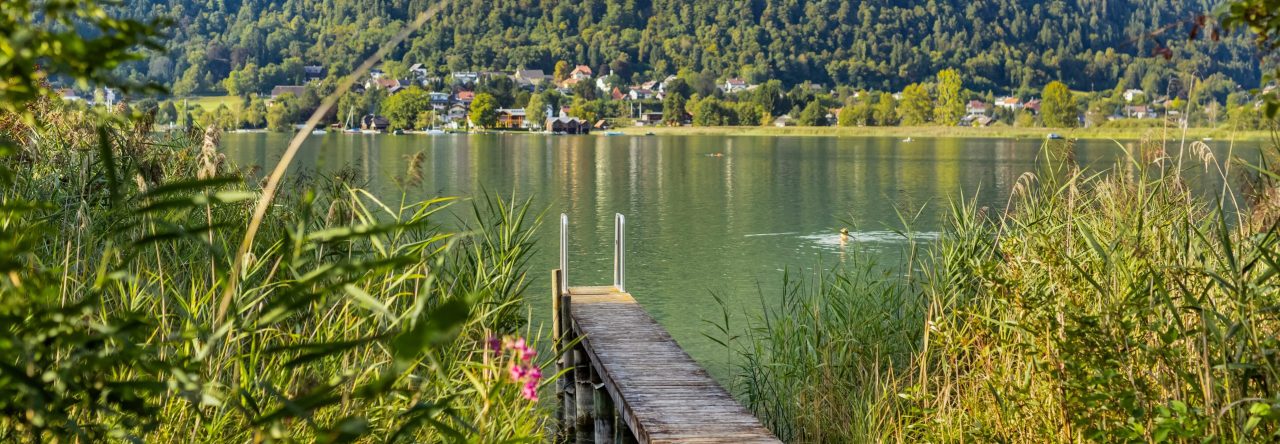
Short facts:
Duration of the journey from Chalet Bjoerk:
10 minutes on foot / 2 minutes by car
Recommended Equipment:
comfortable walking shoes, binoculars, camera

The Bleistätter Moor is almost only a stone’s throw away from our house. It is located at the east end of the Ossiacher See and invites you to walk, jog, watch and linger.
The area has advanced from an ecological problem child to a refuge for unique flora and fauna. You can now discover cranes, kingfisher, bat, dragonfly, beaver and Co. along the hiking trail.
With an area of around 600 hectares, the Bleistätter Moor was once considered to be one of the largest bog areas in Carinthia. At the beginning of the 1930s, the construction of drainage systems began. The land gained has been used intensively for agriculture by the local farmers for decades. Therefore, fertilizers and pesticides washed out got into the Ossiacher See without a filter effect, which worsened the water quality, especially in the eastern bay. Many nutrients also got into the lake through the Tiebel river. With the rehabilitation and flooding of the westernmost part of the moor, the lake’s water-ecological quality has greatly improved.
An important water and nature conservation project was implemented with the flooding and renaturation of the Bleistätter Moor
The slow trail is around seven kilometres long (max. 2 hours walking time), leading to several routes through the species-rich nature and European nature reserve of the Tiebel estuary. Since then, around 80-hectare area was flooded in spring 2017, an attractive habitat has developed here that is home to rare animal and plant species. Over 200 different species of birds have already been observed. These include real rarities such as the shy kingfisher, cranes, white and black storks, ospreys and booted eagles and many more. Furthermore, you can see the only two-millimetre small Desmoulin’s whorl snail, at least 14 bat species – including the very rare Daubenton’s bat – as well as numerous amphibians and over 700 species of butterflies, such as the EU-wide protected Large copper. Many fish species also enjoy the flooding basin, such as the Ossiacher See’s carp, which now finds optimal spawning areas thanks to the newly created shallow water areas.










































